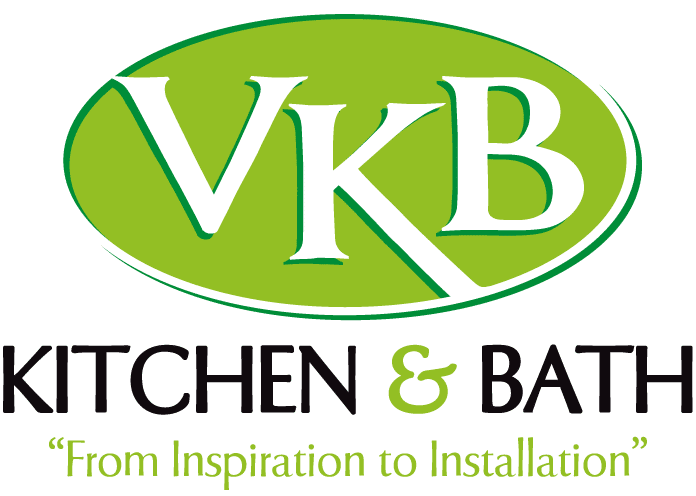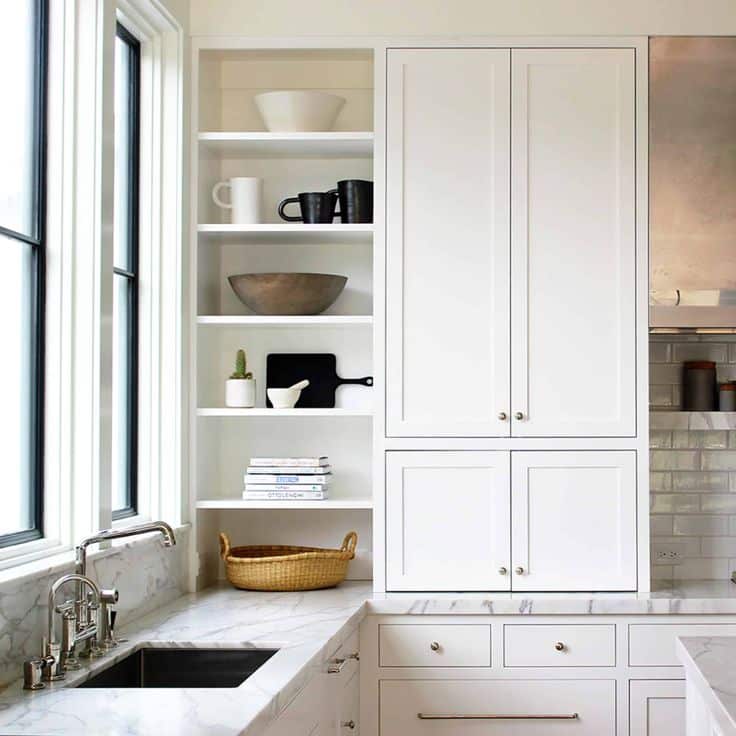There’s something special about natural kitchens that make them such a pleasure to be in. Whether you’re working on a stone countertop, or sipping some evening wine over a wooden breakfast nook, there’s something about a natural kitchen that puts you at ease. Actually, it’s likely a combination of several things. While many natural kitchens may look and feel effortless, our bets are there was plenty of thought that went behind putting it together. In this guide, we’ll look at natural kitchen design elements that make it what it is.
The Appeal Behind a Natural Kitchen
A natural kitchen design is all about simplicity, warmth, and a sense of tranquility. By incorporating elements from nature, you’ll create a space that not only looks beautiful but also promotes a healthier lifestyle. This design philosophy values sustainability and eco-friendliness, making it an excellent choice for environmentally-conscious homeowners. Plus, it’s a timeless look that never goes out of style!
Why Choose a Natural Kitchen?
- Timeless appeal
- Encourages a healthier lifestyle
- Environmentally friendly
- Promotes relaxation and tranquility
- Adaptable to various styles and preferences
Key Design Elements
To achieve a natural kitchen design, consider incorporating these key elements into your space:
Focus On Flow And Openness
Regardless of the size of the kitchen space you have to work with, focus on making it as open and flowy as possible. This will mimic the openness of the outdoors. Even a small kitchen, when designed right, can feel open and inviting as opposed to cramped. Prioritize a good flow and utilize key pieces to send the message of a natural kitchen without making it feel cramped.
Get In Plenty of Natural Light
Natural light is essential in any kitchen design. Invite the sun in by maximizing the amount of natural light in your kitchen. Large windows and skylights are great options, as are glass doors leading to outdoor spaces. If your kitchen doesn’t have ample access to natural light, consider installing solar tubes or reflective surfaces to enhance the available sunlight.
Plants, Plants, Plants
Nothing beats plants and the lush outdoor feeling they bring to a kitchen. To breathe life into your kitchen, add some gorgeous shades of green in the form of plants. Key plants in strategic areas can tie together a portion of your kitchen perfectly. Try a lovely tall olive tree along the entrance to your kitchen or a cute line of aloe veras along your windowsill. You can go extreme and have an entire wall dedicated to a vertical herb garden, or go subtle and have a lush Philodendron on your countertop.
The idea is to bring actual natural elements in the form of plants to create a natural kitchen.
Here are some plants and greenery that you can add to your kitchen:
Herbs
Basil, mint, rosemary, thyme, parsley, oregano, sage, and cilantro are popular herbs that not only taste good in your cooking but also make your kitchen smell nice.
Succulents
Aloe vera, jade plant, echeveria, and haworthia are easy-to-care-for plants that can thrive in your kitchen. They add a touch of green and look pretty.
Pothos
Pothos is a trailing vine with heart-shaped leaves that you can place on a high shelf or hang from the ceiling. It helps clean the air and doesn’t need much attention.
Spider Plant
Spider plants have long, arching leaves with green and white stripes. They can handle different amounts of light and are tough plants, making them a good choice for your kitchen.
English Ivy
English Ivy is a trailing vine that you can grow in a hanging basket or let climb up a trellis. It adds elegance to your kitchen and helps filter the air.
Snake Plant
Snake plants have tall leaves that look like swords and are often green and yellow. They clean the air and can tolerate low light conditions.
Potted Citrus Trees
If you have a sunny spot in your kitchen, you can consider adding a potted citrus tree like lemon, lime, or kumquat. They not only provide fresh fruits but also have beautiful green leaves.
Orchids
Orchids add elegance and beauty to any space. They come in different colors and you can put them on a windowsill or countertop to brighten up your kitchen.
Ferns
Boston ferns, maidenhair ferns, and bird’s nest ferns are popular choices if you want to create a lush and tropical feel in your kitchen. They like humidity and indirect light.
Air Plants
Air plants are unique because they don’t need soil to grow. You can place them in decorative containers or attach them to driftwood or other decorative items in your kitchen.
Work With Light Wood Elements
Incorporating light wood elements like cabinets, shelves, and furniture adds warmth and character to your space. Opt for woods like maple, birch, or ash, which have a lighter, more natural appearance. Additionally, you can choose reclaimed or sustainably sourced wood to minimize your environmental impact.
Opt For Natural Stone Countertops
Durable and beautiful, natural stone countertops are a fantastic addition to any kitchen design. Choose from options like granite, marble, quartz, or soapstone, each offering its unique benefits and aesthetic appeal. These materials are not only visually stunning but also long-lasting and easy to maintain.
Curate Unique Pieces
Repurposed items and family heirlooms can bring an organic uniqueness to a natural kitchen. Considering that a natural kitchen is a highly coveted style, set yours apart with unique pieces to make it your own. Display old copper pots that are showing their unique patina, display children’s artwork, and family photos with veggie-themed magnets on the fridge. There are numerous ways you can display unique pieces. A great way to ensure this is to find personal pieces like photos or artwork.
Layer On Soft Lighting
Ditch harsh overhead lights in favor of soft, ambient lighting that creates a cozy atmosphere. Layer your lighting with a mix of pendant lights, under-cabinet lighting, and floor lamps to achieve the perfect balance of brightness and warmth. Choose energy-efficient LED bulbs to reduce your environmental impact and save on energy costs.
Use Food and Ingredients as Decoration
Doubling food and ingredients as decorative items is an easy way to style a natural kitchen. Don’t be shy about displaying your farmers market produce in woven baskets, or displaying an assorted bowl of fruit. Your collection of cooking oils can shine as lovely eyepieces as well when displayed strategically in the right container. Opt for clear jars to store and display beautiful ingredients like oats, beans, and wild rice. The idea is to use the natural color and texture of food and ingredients as natural decorative pieces.
Choose The Right Color Scheme
Opt for a color palette that complements your natural kitchen design. Examples include dark wood contrasted with green and white, or light wood contrasted with beige and cream. Earthy colors like greens, browns, and taupes also work well in natural kitchens. Avoid overly bright or bold colors, as they can detract from the calming atmosphere you’re trying to create.
Compliment With Pops of Earth Tones
Alongside choosing the right nature-toned color scheme for your kitchen, you can further enhance the dominant color scheme with pops of earth tones. Think forest green china, ocean blue coffee mugs, and cloudy white linens. Consider them accents that you can make as bold or as subtle as you want.
Prioritize Natural Materials
It’s a no-brainer to use natural materials to build a natural kitchen. Wooden cabinets, stone top counters, and marble islands are all great options to create that natural vibe. Of course, if this is out of budget, you can opt for materials that mimic the look. Budget-friendly options such as laminate, quartz, tile, and concrete can help you easily achieve the look of a natural kitchen.
With that said, a natural kitchen isn’t all about how it looks. Prioritizing natural materials makes a kitchen natural due to its sustainability and environmentally friendly aspect of it.
Bonus Tips
A natural kitchen isn’t just about the way it looks. It’s also about having eco-friendly appliances and fixtures within it. Consider installing the following to make your kitchen design more environmentally sustainable:
A water filter tap
Forget plastic water bottles. Investing in a high-quality water filter tap is an eco-friendly option for supplying your home with fresh drinking water.
Eco-friendly appliances
Eco-friendly appliances and fixtures reduce your energy and water bill, making your kitchen more sustainable. Look for ENERGY STAR-certified appliances to narrow down what eco-friendly pieces would work in your natural kitchen. For instance, an energy-efficient refrigerator and dishwasher is a great eco-friendly upgrade.
In Summary
A natural kitchen, when done right, is truly a space most would be happy to be in. Whether cooking up a meal, sipping your morning coffee, or catching up with friends, the organic elements in a natural kitchen promote a welcoming openness. By incorporating the right design elements and materials, you can achieve the natural kitchen of your dreams.



